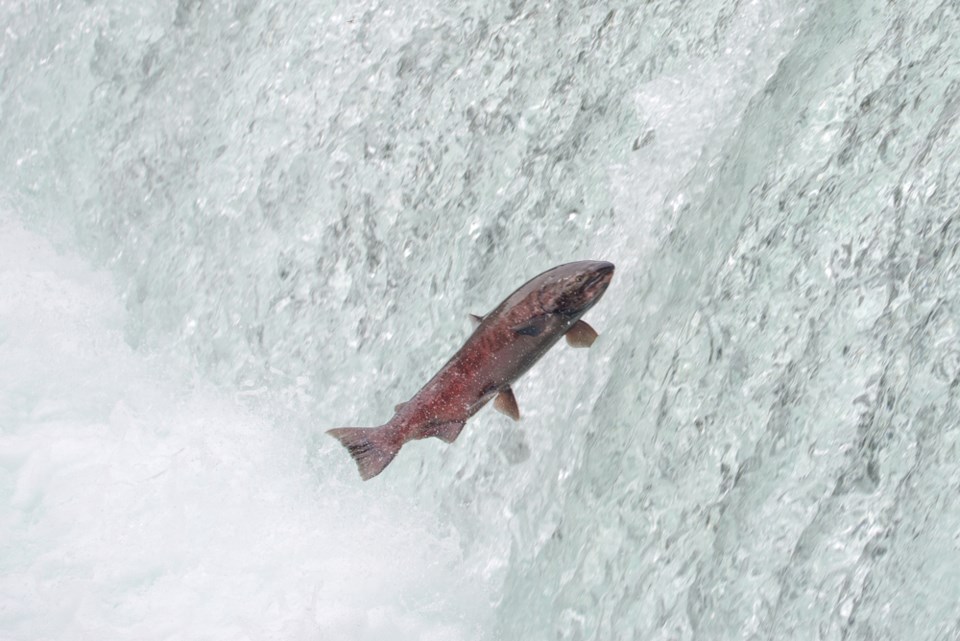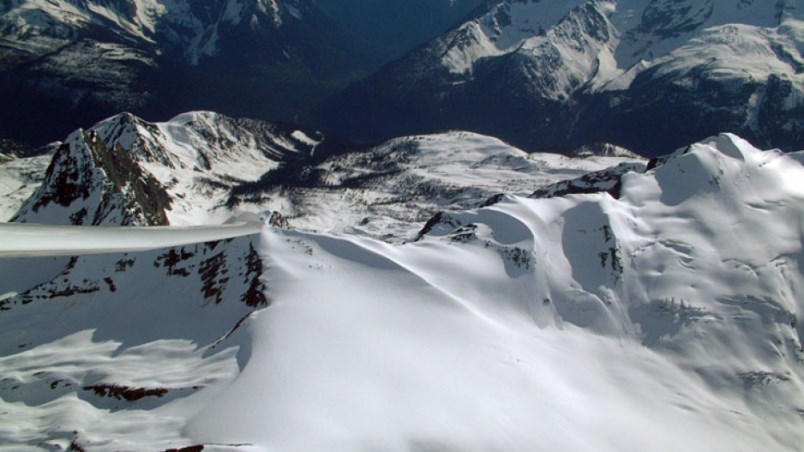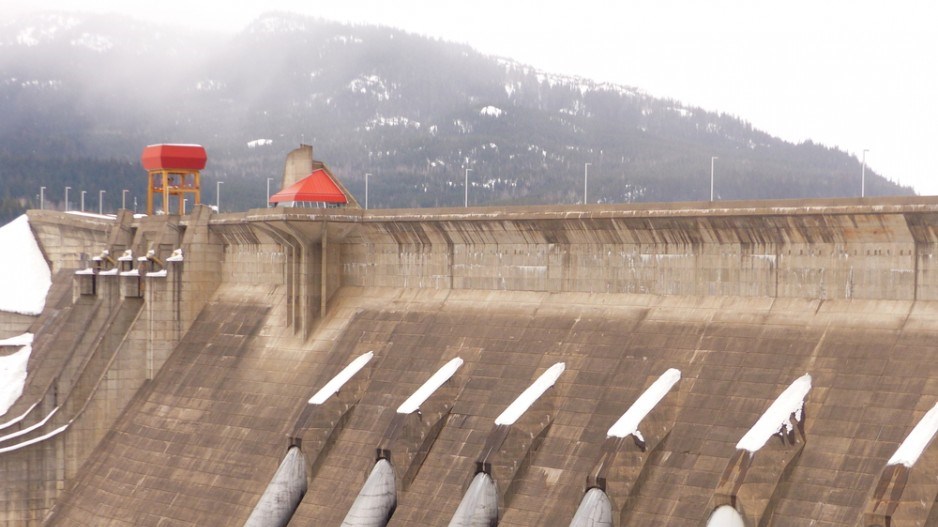B.C. could face seasonal or long-term water shortages and hydroelectric production disruptions lasting weeks or months by 2050, the year by which Victoria hopes to move 60 per cent of B.C. to electrical power under its CleanBC strategy, a Glacier Media investigation has found.
That move to clean electricity from sources such as hydroelectric production sits at the heart of the initial plan the government hopes will help B.C. meet greenhouse gas reduction goals to combat climate change.
“By moving to clean, renewable energy – like our abundant supply of B.C. electricity – we can power our growing economy and make life better and more affordable for British Columbians,” Premier John Horgan said when the plan was unveiled in December 2018.
However, with interior glaciers receding and expected to be minimal by 2100, B.C. is relying on expected increases in precipitation to fill the province’s dam reservoirs for power generation, despite the fact drought periods are also predicted.
And, the Ministry of Environment and Climate Change Strategy said, a new strategy is in the works for 2020, a commitment made in the original 2018 plan.
There is, however, a proverbial fly in the ointment.
The Preliminary Strategic Climate Risk Assessment for British Columbia report, released quietly in July, said water shortages could disrupt key infrastructure services, including electricity production and water treatment.
“Historically, water shortages in Canada and the U.S. Pacific Northwest have reduced hydroelectric production capacity, caused thermo-electric plants to shut down and increased water and wastewater treatment requirements due to higher turbidity,” the assessment said.
U.S. academic studies for neighbouring Washington State suggest the same concerns.
The assessment said costs to the B.C. taxpayers could hit $750 million while agriculture, fishing, forestry, transportation, recreation, tourism, and oil and gas sectors could see costs exceeding $1 billion.
BC Prelim Strat Climate Ris... by Emma Crawford Hampel, BIV.com on Scribd
The threats to power generation could make life tough for British Columbians, as more than 90 per cent of BC Hydro's generation is produced through hydroelectric generation.
A quarter of BC Hydro's power comes from the Mica, Revelstoke and Hugh Keenleyside dams on the Columbia River. Some 29 per cent comes from dams in the Peace region. At certain points of the year, those reservoirs, which act as batteries storing water for power, are reliant on glacier water.
While the utility says it is investigating alternative sources of energy, such as wind and wave power, its 43,000 gigawatt hours of electricity annual production supplies more than 1.9 million residential, commercial and industrial customers.
The risk assessment came three years after it was suggested to cabinet in January 2016 that a risk framework be developed, according to documents obtained by Glacier Media under access to information laws. Five months later, Ministry of Environment communications staff asked for data on identifying the forests, ecosystems and watersheds at greatest risk and recommendations to protect them. Another study has been requested for that purpose.
2016-Assessment of Climate ... by Emma Crawford Hampel, BIV.com on Scribd
Power Generation
The ministry said the assessment’s data is being taken into account in future planning.
“The province is using information from the climate risk assessment to help develop a new strategy, which will be released in 2020 to help prepare for climate change and protect people, communities and infrastructure across B.C.” the ministry said.
“It did not comprehensively assess risks to hydroelectric generating potential due to climate change and did not assess local or regional climate risks in B.C.”
However, a new request for proposals for a second assessment calls the first assessment “systematic and rigorous.”
That Oct. 18 request said the second-phase assessment is to be conducted on different scales than the first and “to consider the differential impacts of climate risk based on factors such as gender, ethnicity, race, age and ability.”
The requested new assessment – which has a $70,000 budget – is planned to examine risks to be addressed by regional governments, provincial ministries and public sector organizations for project implementations in the 2020-21 fiscal year.
The threats
The assessment found glacier loss in B.C. is projected to vary depending on geographic location, with the most rapid declines occurring for glaciers at lower elevations and in southern B.C.
Glacier Media’s investigation found melting glaciers’ ability to provide stream flow needed for power production at some times of year could be significantly diminished. That factor may, however, be offset by increased precipitation, according to indications from academic studies, BC Hydro and the government.
The assessment said slight increases in annual precipitation are anticipated, but these increases are expected to be offset by rising temperatures and decreases in summer precipitation. It said rising temperatures could result in reduced snowpack and earlier spring snowmelt.
“These changes could result in seasonal water shortages about once every two years or more frequently by 2050,” the assessment said.
Water usage restrictions, economic hardship and seasonal loss of livelihood could result in temporary, widespread psychological impacts such as stress, anxiety and depression, and people with natural resource-dependent livelihoods could face more severe impacts, the assessment said.
And, degradation of wetland and forest habitats could affect many species while higher river temperatures could cause stress for temperature-sensitive species, especially salmon. Natural resources could take years to recover, the report said.
That’s not quite the picture Minister of Environment George Heyman painted at the CleanBC release when he said, “CleanBC is a B.C.-specific approach to making our communities strong and vibrant for decades to come as we rise to the challenge of global climate change.”
The assessment pointed to the 2015 drought summer with its flood and forest fires as a future standard rather than an exception.
“Rising temperatures and changes in precipitation form, timing and intensity caused by climate change will increase the likelihood, and therefore the risk, of this scenario in the 2050s,” the assessment report said.
“Some rivers had their lowest flows in the 80- to 100-year record,” the report said of 2015.
Precipitation increases
None of this is to suggest the province is pinning its entire power-needs wish list at the toes of glaciers and their meltwater.
“The climate risk assessment found that a 25 per cent decline in glacier area by 2050 would likely have minor impacts to infrastructure services and were not expected to result in prolonged disruptions to services,” the ministry said. “While glacier runoff will likely decline overall, decreases could be counteracted in certain areas by regional increases in precipitation.”
And, said BC Hydro spokeswoman Tanya Fish, the public utility is working with “some of the world’s leading scientists in climatology, glaciology and hydrology to determine how it may impact the water supply in our reservoirs.”
Fish said current B.C. climate projections indicate overall warmer and wetter conditions in the future.
“Runoff into BC Hydro-managed reservoirs is projected to increase on average in the interior, and stay about the same on average on the coast. We do anticipate that we’ll continue to have ample supply of water in the future,” Fish said. “Seasonal changes in the timing of runoff are already occurring with more runoff occurring in the winter and early spring and drier conditions later in the summer. This will make reservoir water management an important adaptation to short-term summer low flows.”
And, U.S. academic studies of Washington State conditions back that, saying glacial declines could be offset by increased precipitation as a result of warming trends.
Fish said glacier runoff only accounts for a few percentage points of power generation capabilities.
 A leaping salmon. (via Shutterstock)
A leaping salmon. (via Shutterstock)As well, Fish explained, BC Hydro’s large interior reservoirs store multiple years of water supply and are therefore able to adapt well to short-term water shortages.
Simon Fraser University Prof. Mark Jaccard said the total amount of precipitation may not be that different but could fall as rain rather than snow.
“Since other jurisdictions are doing lots of wind and solar and increasingly looking to batteries, B.C. could also do this, but we have the added benefit of massive reservoirs (which are like batteries), so all the high-level analysis I see shows a rising value to the storage,” Jaccard said.
BC Hydro is also expanding adaptive technologies for evolving conditions such as using hydroclimate monitoring technology, upgrading snow and climate monitoring stations and replacing dam spillway gates.
“We continue to work closely with the province to understand the long-term impact CleanBC measures and incentives will have on the province’s electricity load,” Fish said. “The province is currently working through Phase 2 of the Comprehensive Review, which is focused on how we’ll support the province in meeting the electrification targets in the CleanBC Plan.”
Fish said that work would be used to inform BC Hydro’s next Integrated Resource Plan (IRP), which they plan to file with the BC Utilities Commission in early 2021.
That IRP was due last year, five years after the first one in 2013 as mandated by B.C. law.
The NDP government quietly moved the new IRP to 2021 by order in council.
Fish said the Generational Challenge report released last April focused on demonstrating how BC Hydro adapted through integrated planning to respond to extreme weather conditions and an Enbridge gas pipeline explosion in the winter of 2018-19 to meet the province’s electricity demand.
BC Hydro did, however, in April release a report on responding to extreme weather and other challenges for the province’s two largest reservoirs: the Williston on the Peace River and the Kinbasket on the Columbia. The Williston experienced four months of low inflows.
The report noted that in 2018, drought conditions led to record seasonal lows in September, October and November for Williston.
However, the report went on to say fall and winter inflows have increased in almost all regions.
“While patterns are changing, current 2050 and 2080 models suggest a modest increase to overall inflows across the province as a result of increased precipitation,” the report said.
Other clean energy sources include wind, biomass, solar, biofuels, hydrogen and geothermal production.
The CleanBC plan was endorsed by B.C.’s Climate Solutions and Clean Growth Advisory Council, members of which are drawn from industry, unions, government bureaucracies, politics and academia. Some had been critical of previous climate action work in B.C. and other provinces.
None of the council members contacted by Glacier Media would comment for this article. Those contacted included co-chairs Merran Smith, executive director of Clean Energy Canada, and Marcia Smith, Teck Resources’ senior vice-president of sustainability and external affairs. Both referred Glacier Media to the ministry.
 Jumbo Glacier. (via Jumbo Ski Resort/Flickr)
Jumbo Glacier. (via Jumbo Ski Resort/Flickr)Glacier losses
Glacier loss has been predicted around the world for some years – specifically for the Andes and Tibetan plateaus and the Rockies, the last of which feed several major B.C water basins.
And, the risk assessment said, water reductions from glacier loss could disrupt transportation, hydropower dams, agricultural assets and other infrastructure services. Taxpayers would wind up covering monetary losses from lost revenue, reduced hydroelectric capacity and reduced water rental fees.
Glacier area declined by approximately 11 per cent between 1985 and 2005. Due to projected increases in temperature, glacier area is projected to decline an additional 30-50 per cent by 2050 and as much as 70-95 per cent by the end of the century.
“Glaciers represent a vital freshwater resource for the province,” the assessment said. “By the 2050s, the contribution of glaciers to streams and rivers will decline, and associated streamflow is projected to decrease. Timing, amount and temperature of flow could affect natural ecosystems and communities. Particularly during summer months, water supply could be reduced for agriculture, power generation and industry.”
And university research indicates they won’t be coming back.
According to an article in the April 2015 Nature Geoscience Journal, by 2100, few glaciers will remain in the Interior and Rockies regions. Maritime glaciers, in particular those in northwestern British Columbia, will survive in a diminished state, it said.
“We project the maximum rate of ice volume loss, corresponding to peak input of deglacial meltwater to streams and rivers, to occur around 2020-40.”
BC Hydro has not released studies on the effects of the melting of glaciers on hydroelectric power production since 2013.
Glacier Media received documents from the provincial power utility after making access to information requests from 2010 to present.
The request under access to information laws was meant to cover the period covered by BC Hydro’s IRP.
Glacier Media sought the records to see how the disappearance of glaciers might affect Hydro’s plans. The records provided under the access request included reports from 2011, 2012 and 2013 – all information that would have been included in the 2013 IRP.
– Jeremy Hainsworth, Glacier Media




